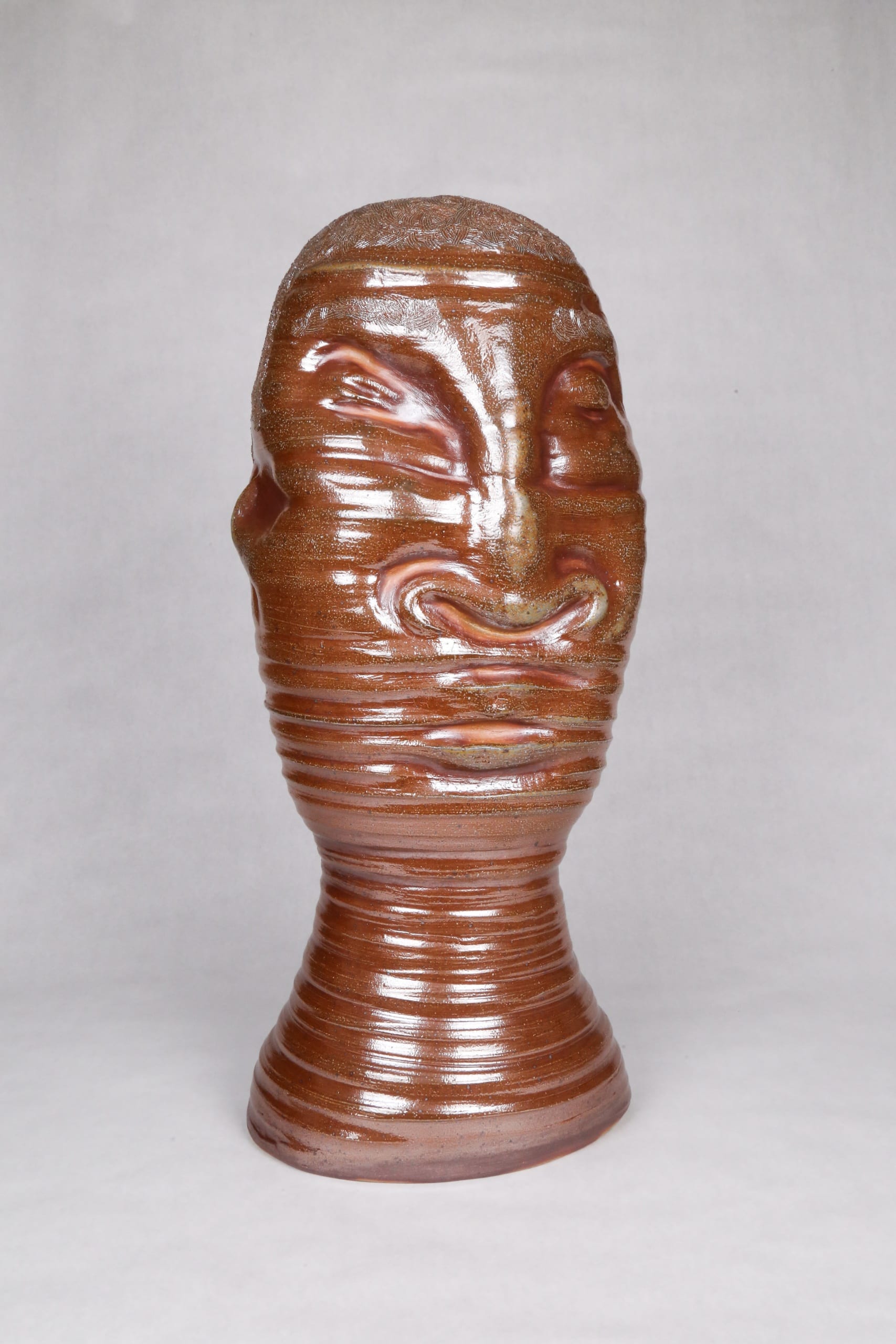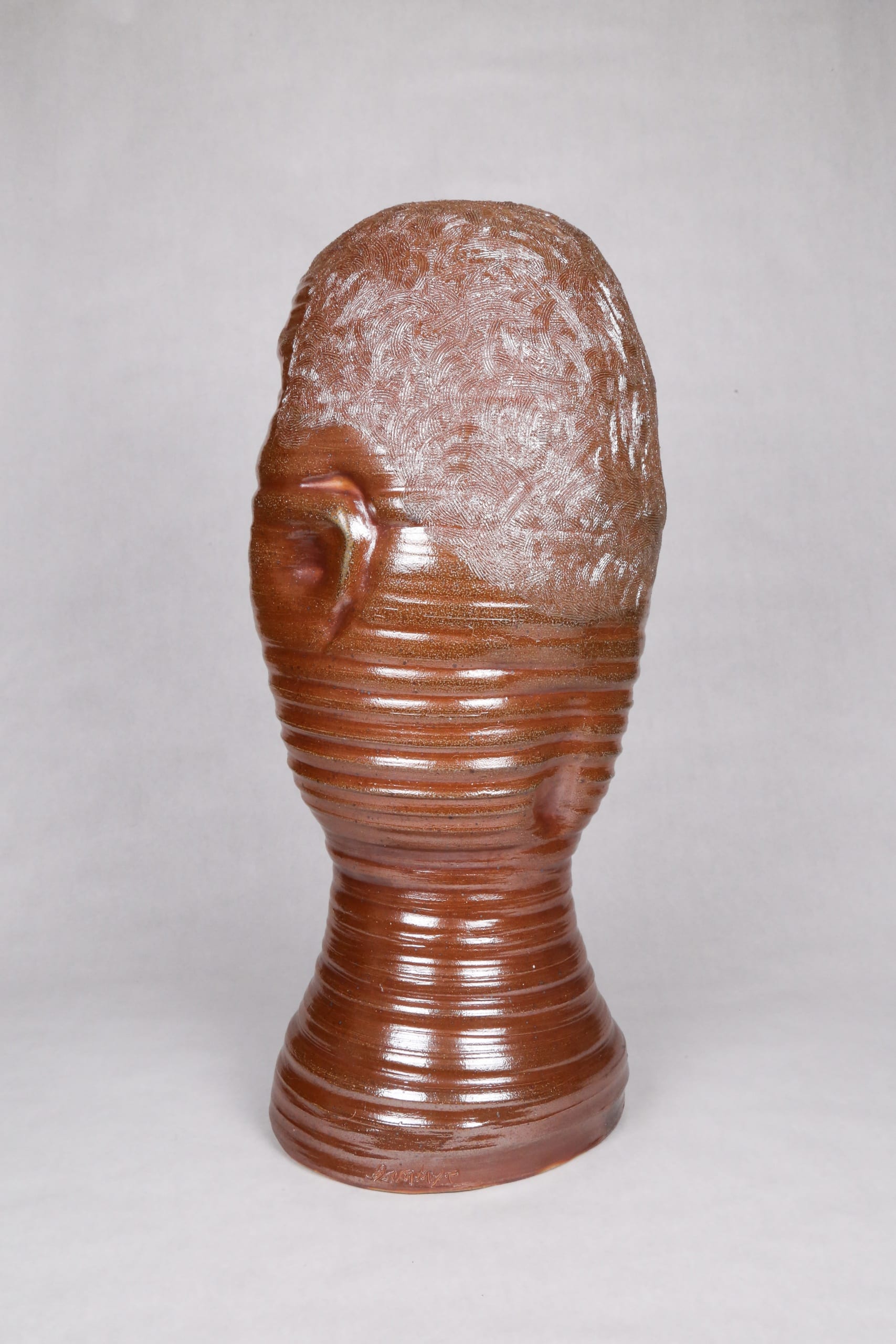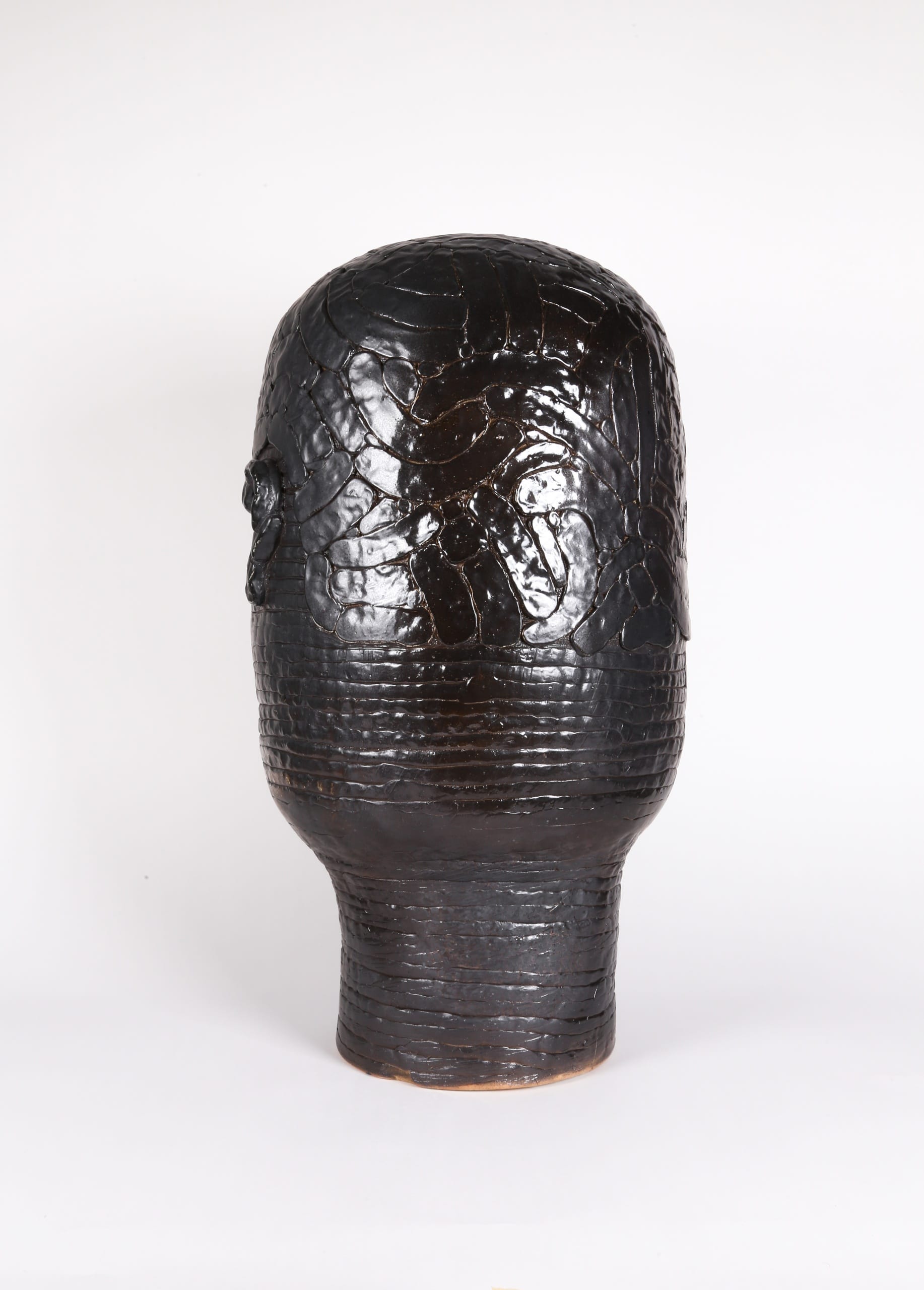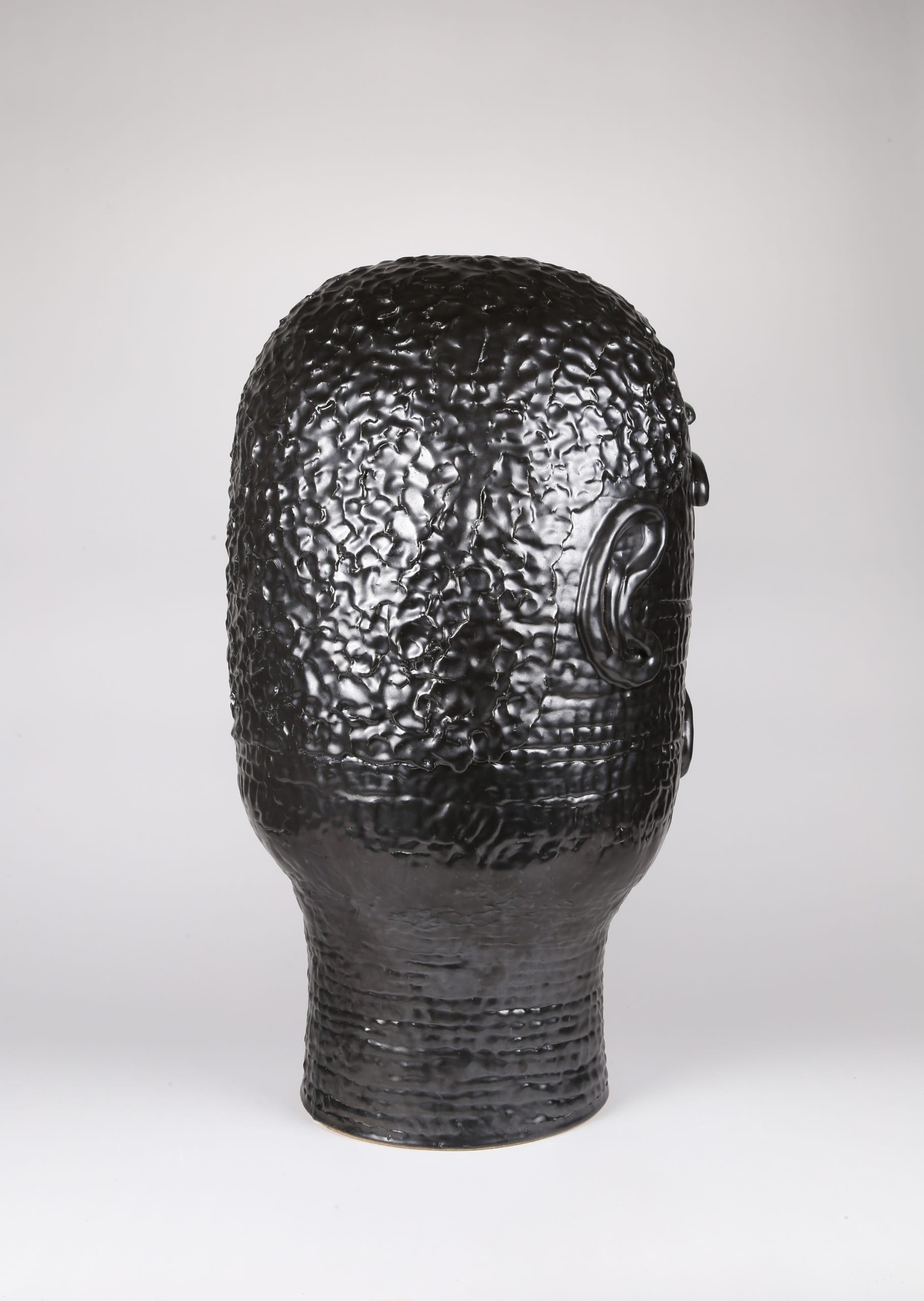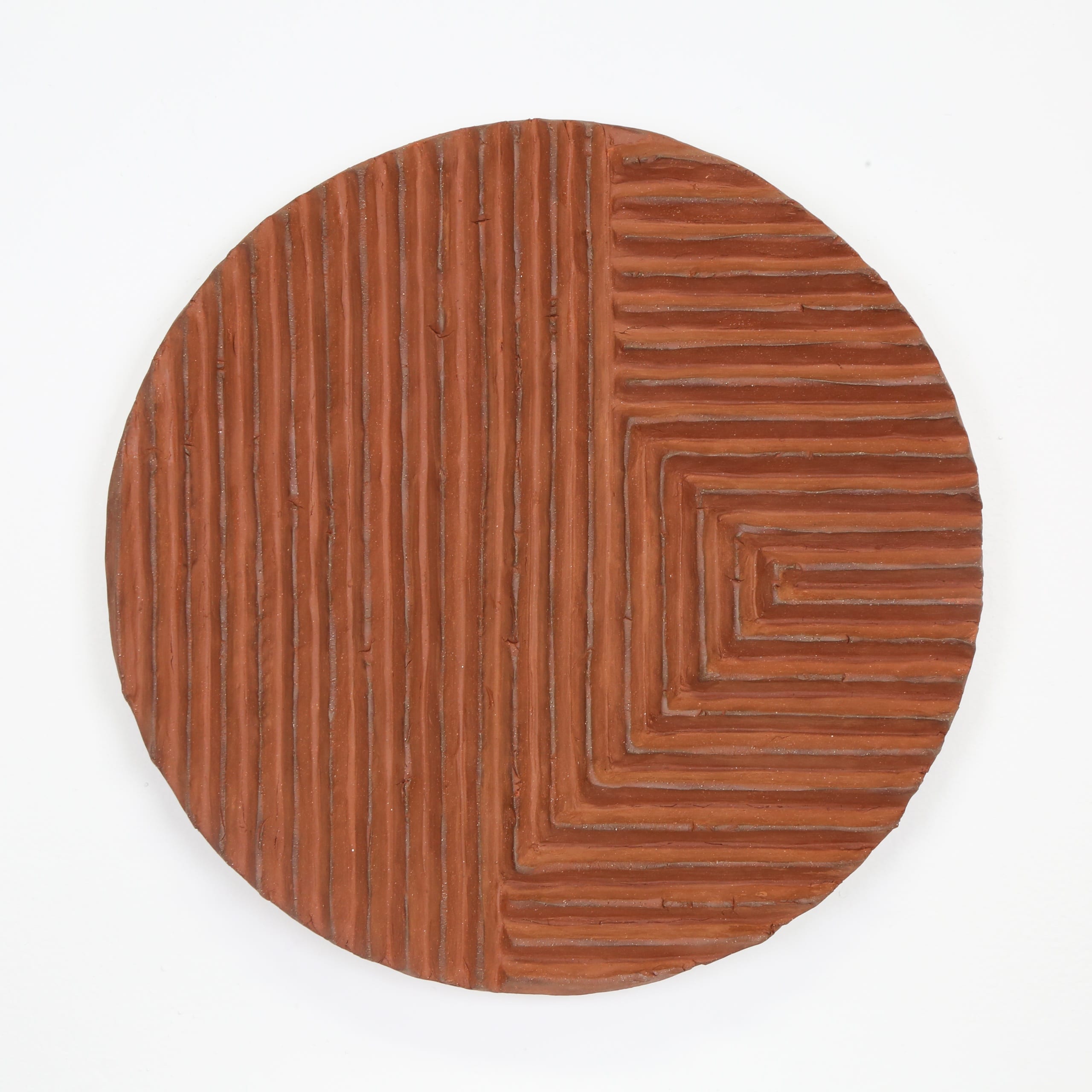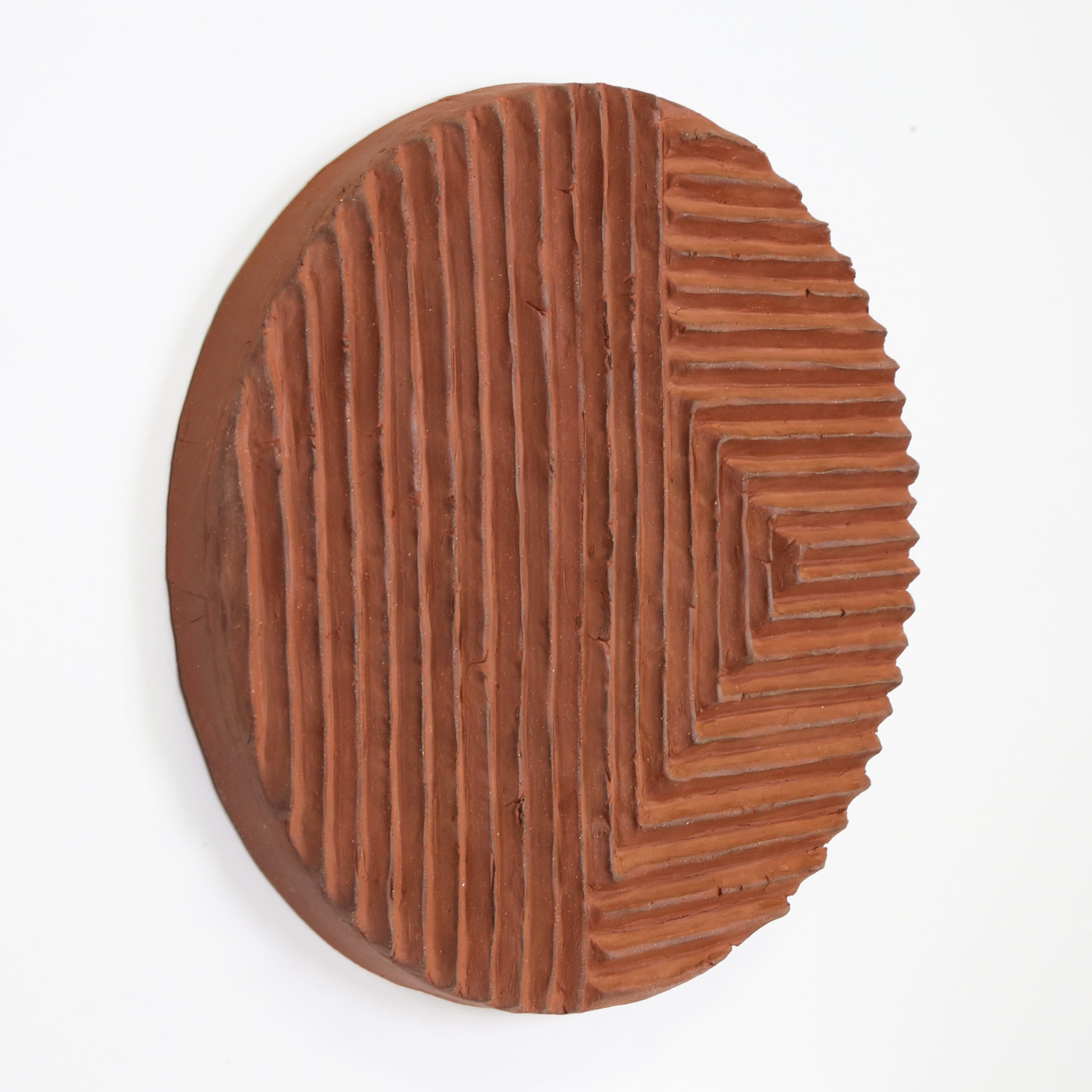The following interview was conducted between artist Ebitenyefa Baralaye and curator Glenn Adamson on March 19, 2021, via Zoom, as Baralaye was developing a new body of work. This series, comprising tall, figural vessels, recalls the cross-cultural genre of the face jug while also engaging questions of contemporary identity. Examples from the group are to be included in A New Realism, curated by Adamson for Friedman Benda Gallery (June 3–July 2, 2021).
Glenn Adamson: Let’s begin with Black figuration. This topic has become of central concern in recent years, thanks to the work of painters like Kerry James Marshall, Amy Sherald, Tschabalala Self, Lynette Yiadom-Boakye, and many others. How do you approach the question of representation?
Ebitenyefa Baralaye: My starting point is thinking of how power is coupled with representation. Cultures and communities define power by controlling how they represent themselves to the world. It is the prerogative of the artist. I am working with clay, a material that people have been using to represent the figure for thousands of years. It has been a spiritual stand-in—a religious icon—as well as a representation of social and political class. My recent work has shifted in ways deeply affected by the ongoing pandemic, the passing of my father due to COVID-19, and sociopolitical tensions and tragedies in our country.
I have been thinking about the encoded nature of faces: the way facial features represent not just one person but a community, a society, and a culture. I have been thinking, too, of face jugs made by enslaved potters—an aesthetic of abstraction that likely has ties to West African abstraction. I am drawing on roots that track with my own narrative of identity and migration. I was born in Nigeria, spent my early childhood in Antigua, but have lived most of my life in the United States. The way I navigate the world has a lot to do with my ancestral lineage. This includes the Black artists, educators, activists, and other workers who have preceded me and created the platforms I benefit from in my current home, the United States. It also extends through my mother and father to the Yoruba people, and the lineage of makers and artisans who were involved in producing ceramics and sculpture long before I was born.
Adamson: Does your medium affect the message of your figurative works? I think particularly about the heaviness of clay, its massiveness, but also the fact that it registers the touch of a tool on its surface so readily. Might there be an equivalence there to the weight that’s carried by Black bodies, as well as fragility and vulnerability?
Baralaye: I am deeply invested in clay’s materiality and physicality. It translates strongly into how I think of the human condition. Clay has a similar density to the weight of the body. From a Judeo-Christian standpoint, the understanding of human beings being formed from clay resonates with me. From that sense of origin, we all bear the image of God, the weight and mark of the one who made us.
This weight comes with a kind of fragility. The fragility of clay is often seen as a challenge and limitation—the effort to keep works from getting cracked, chipped, or broken. In the past, concerned about this and ideas of permanence, I started casting work in metal, seeking a more archival material. Metal is actually quite fragile itself; it breaks down over time when exposed to natural elements, oxidizing and corroding to dust if not preserved. A clay object might break into pieces when dropped, but we are still pulling bowls and other ceramic works out of the ground that were made hundreds of thousands of years ago. Ceramic objects are among the earliest indicators that a civilization existed in a particular place.
So, I see clay as elemental in that, as a material, it literally makes up the earth, and in its use, it represents the inception of complex societal activity. The raw clay that we live on top of is layered over by architectural and structural applications of asphalt, concrete, steel, wood, and glass. In working with clay, there is an inversion of that layering, bringing this foundational element to the surface and directly into our hands.
Adamson: You just touched briefly on your Christian belief, which is not something we’ve talked about before. I’m curious to hear about its relevance to your work. It occurs to me that earth is a kind of shared ground, common to many religions, almost a pantheistic principle. Do you have a specifically Christian vantage point on the material?
Baralaye: My values of humanity are grounded in my understanding of God, who I see as my creator, the creator of everything, and the source of my ability to create. When a person is separated from their land, home, and community, their sense of dignity is minimized. I believe that the same is true when you separate a person from a connection to God. When a person’s image and body is dismissed as being ungrounded in the divine, justification for injustices we have witnessed throughout time are never far away. Humanity’s indifference and malice towards each other—thinking of sentiments reflected in the killing of George Floyd and also the more recent murders in the Asian American community—tie back to justifications rooted in the way we separate people from inherent dignity and worth.
When I sculpt a face, I am, in part, reminding myself that I and all humanity are rooted in divine authorship, with bodies and souls of eternal persistence. This understanding is not a sanitized and ephemeral platitude. It is a dizzyingly present and dismayingly messy conviction heard in the gospel cries of Mahalia Jackson in “Amazing Grace” and the transcendently relentless restlessness of John Coltrane’s A Love Supreme. My religious understanding of being a “broken vessel” and “clay in the hands of The Potter” has both liberating and sobering consequence on how I embrace and create in clay as reflection of my identity before God.
Adamson: Your father tragically passed away at an early stage of the COVID-19 pandemic. Does your current figural work reflect on that loss?
Baralaye: I have asked myself whether my work has helped me to grieve, and there is one very significant way that it has: my father was a strong champion of my creative interests. He would always encourage my siblings and me to “follow our bliss.” That was his mantra—he was a bit of a Nigerian academic hippie. [Laughs] Very much someone who loved music, literature, and the arts. Actually, as a child and early adult I wasn’t very close to my father and never thought that I bore much resemblance to him. Now every time I see myself, looking in mirrors and old photos, I see his face. The portraits I am making are not just individual faces, but also a representation of ancestry in a very personal way that I relate to my own family.
My father was born in and married my mother in Nigeria. When we left the country shortly after I was born, he made it clear that he had no desire to return and cut ties with his extended family. Consequently, I’ve never returned to visit Nigeria. Still, being of the Nigerian diaspora, I have never felt truly at home anywhere else. I am planning to visit, hopefully soon. I would expect, on arrival, to experience degrees of cultural disconnect. I would likely be seen and received as more of an American than an African. Glenn Ligon’s Gold nobody knew me #2 captures this well—I appreciate the nuance of that work. A homecoming doesn’t have to be an easy thing. Now some of the strongest connections to my father’s land and my biological birthplace lie in my father’s physical records: certificates, documents, and old photographs. He kept more documents from his past than I would have ever imagined. Going through it all has been a way of both looking back on how I knew him, and moving forward with a unique window into parts of his life that he never shared.
Adamson: This leads to another topic: the now universally acknowledged phrase Black Lives Matter. What you’ve been talking about is one construction of that phrase: the life of your father, within the larger collective of Black humanity. But what about the word “matter”? Usually we’re using it as a verb: it matters. It counts for something. It has value. But we could also think of matter as a noun. Could you talk about the relationship between mattering and matter?
Baralaye: As a Black man in America I can attest to ways in which my identity has been addressed or perceived as a particular type of “other.” My experience has not largely been rife with conflict, but this perception of otherness, in any number of contexts, can have unfortunate and fatal consequences, as we have seen. It matters to understand why this is the case. I was listening to a James Baldwin quote from the 2016 documentary I Am Not Your Negro earlier today. He notes how the “n-word” developed as label and insult for Black people in American society. Baldwin turns this on its head and asks, why was it necessary for the American consciousness to have that word in the first place?
What and who matters has always been the core sentiment that has shaped our laws and priorities as a country and people. From my perspective as an artist, when a Black body is affirmatively represented in art, it directly or indirectly presents us with the reality that Black lives do matter. Affirming this phrase, especially in the tide of recent and ongoing events, is important. Acknowledging the actual matter of Black life is also an important way of understanding the phrase. If the cultural and racial idea of Blackness encompasses a range of qualifiers, matter (or substance) is relatively objective and immutable. Matter is the body. It is the fact that when I see a Black person—my neighbors, friends, mother, sisters, and nieces—I am seeing a Black body, the material nature of a Black person. The other matter that matters is environment and community. Understanding “Black Lives Matter” as a declaration for justice and dignity—both of those things are challenged when the body is removed from community and home/land. We see that very clearly with slavery. Black Lives Matter is not just about not killing Black people; it is, as importantly, about knowing the matter of Black people. This is partly the impulse in my portrait series, speaking to the significance of Black matter in the variety of its forms.
Adamson: How does clay, as a particular type of matter, figure into this picture?
Baralaye: I am making connections between the darker clay bodies and glazes that I’m working with here and the skin tones of Black bodies. I use terra-cotta clay both as material and surface in my Labyrinth and Cell series. Terra-cotta refers to a range of iron-rich types of clay that are typically fired at lower temperatures and as a result have more porosity and absorption. I relate this quality of absorption to the skin of our bodies, which also is not watertight. Skin is the largest organ of our bodies and a membrane through which we actively absorb moisture and other trace elements. Similarly, as we walk on the earth it seems solid, but it takes in all kinds of things. Being aware of and sensitive to my environmental and material footprint is important to me as an artist and maker.
From a production standpoint, clay is not a neutral substance; it is a membrane that has specific characteristics and properties as well as a memory of the forces acted upon it. This becomes quickly apparent: everything that is done to clay has a consequence, in the moment and/or later on, through forming and firing processes—shrinking, cracking, and moving/twisting. It brings to mind the book The Body Keeps the Score [by Bessel van der Kolk]. Clay’s physical memory is like the experiences and trauma that we carry in our bodies, not always in visible marks and impressions but in a deeply physiological sense, in our shifting ability to cope, to be happy, to feel fulfilled, to be healthy. This has been brought to the forefront for me this past year, not only with the passing of my father but also in how the whole world is going through trauma under the current pandemic. We are literally carrying the weight and marks of it in our bodies.
Adamson: In previous conversations, you have described Simone Leigh’s sculptures to me as being “defended” or fortress-like while also inhabiting their own space and being, and having a kind of certain presence in the world. Following on from your discussion of trauma, I wonder whether you see the porosity reflected in some of your work as being in contrast with that idea of artwork as a kind of armor or protective mechanism.
Baralaye: A part of the wonderful complexity of Simone Leigh’s Brick House—this fortress-like structure—is the absence of eyes in the figure’s head. It is missing this piercing representation of identity. To me, this suggests some sort of a removal or erasure, which I relate to the history of Black people in this country and across history. I see two elements at work: an understanding of power, dignity, and strength, but also a representation of what it is to be vulnerable.
Going back to ideas of matter and power, there are unfortunately still perspectives reflected in our society and culture that see Black bodies and a growing presence of Black community as a threat. This reality comes to mind when I listen to Billie Holiday sing “Strange Fruit,” realizing that layers of that fruit, that vulnerability still persist. I am not pessimistic but I am persuaded of our (sometimes willful) forgetfulness as a country and people. There is a compelling duality in clay’s nature as a metaphor for both vulnerability and armament/defense.
I think of the excavated terra-cotta warriors in China [from the late third century BCE] as capturing that balance well. They are both symbols of power and literal armament, but also express material and dynastic fragility in their decay. Rather than these two qualities contrasting each other, they are solidly embedded in each other: power and porosity. Clay has a humbling way of leading me to reflect on brokenness, particularly my own. The medium continually reminds me of its vulnerabilities and force as an active voice and presence that tracks the spiritual, ancestral, and social realities I navigate every day.
Ebitenyefa Baralaye is a ceramicist, sculptor, and educator. His work explores cultural, spiritual, and material translations of objects, text, and symbols interpreted through a diaspora lens and abstracted around the aesthetics of craft and design. Baralaye received a BFA in ceramics from the Rhode Island School of Design and an MFA in ceramics from the Cranbrook Academy of Art. Baralaye’s work is featured in the exhibition and catalog Objects: USA 2020. He is currently an assistant professor and the section head of ceramics at the College for Creative Studies in Detroit.
Glenn Adamson is a curator, writer, and historian based in New York. He has previously been director of the Museum of Arts and Design, New York; head of research at the V&A, London; and curator at the Chipstone Foundation, Milwaukee. Adamson’s publications include Thinking through Craft (Berg, 2007); The Craft Reader (Berg, 2010); Postmodernism: Style and Subversion, 1970–1990 (V&A, 2011, coedited with Jane Pavitt); The Invention of Craft (Bloomsbury, 2013); Art in the Making (Thames & Hudson, 2016, coauthored with Julia Bryan-Wilson); and Fewer, Better Things: The Hidden Wisdom of Objects (Bloomsbury 2018). His newest book is Craft: An American History (Bloomsbury, 2021), and he is cohost of the online interview series Design in Dialogue.


